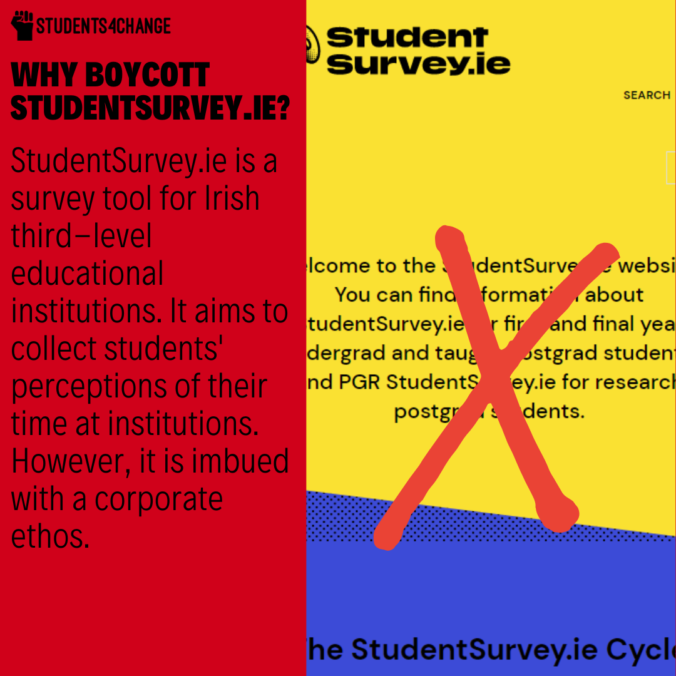StudentSurvey.ie is a survey tool for Irish third-level educational institutions. It aims to collect students’ perceptions of their time at institutions. However, it is imbued with a corporate ethos. To note, this is separate altogether from module evaluations, which are very useful for lecturers and also students.
It is a corporate survey that pushes a cookie-cutter logic, and its equivalent the National Student Survey (NSS) is boycotted in the U.K. by the NUS for commercialising institutions, contributing to course cuts and raising tuition fees.
These tools, like league tables, measure the wrong things in an educational environment, turning higher education into a competitive market in which institutions are pitted against each other in meaningless categories. It is a customer satisfaction survey at its core.
Satisfaction is not the right indicator, and students are not customers. Such surveys encourage institutions to stream money into marketing or other quick fixes to drive up student satisfaction on paper, while not making overarching or substantial changes for real improvement in the student learning experience.
In contrast to the narrow view of education that this survey promotes, a holistic and structural approach should be taken which encompasses. Quality of teaching comes from well-paid staff not on precarious contracts, adequate classroom investment and balanced student to staff ratios.
The survey also lacks context. It reduces very different courses at very different institutions to a simple set of metrics, and implies that one can use these metrics to compare and rank courses and institutions. The questions are too simple and one-dimensional to properly measure the issues at hand.
What counts is whether students have been intellectually challenged in a supportive environment, which is difficult to measure. It can measure if students are happy or not with crude metrics, but the link to teaching quality is dubious at best, and the solutions arising from it are corporate.
Such surveys aim to reduce the issues facing third-level education to mere managerial issues, in other words, designed to hide the forest from the trees, as if the wider socioeconomic context of underfunding did not exist.
This survey can be used to justify future tuition fee increases, and it also treats students like consumers instead of community members. Such scores can also be used by the senior management to justify cutting courses, shutting departments and sacking staff.

Leave a Reply